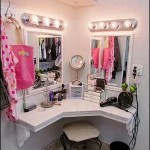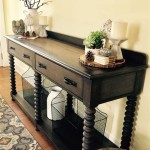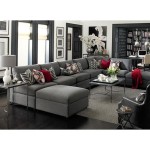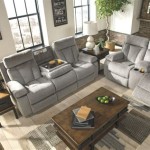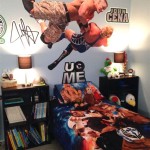Retro Antique Style Home Decor
Retro antique style home decor blends the charm of bygone eras with modern sensibilities. It involves incorporating furniture, accessories, and design elements inspired by specific historical periods, primarily the early to mid-20th century, while adapting them to contemporary lifestyles. This style allows for a unique expression of personal taste and a creation of spaces that evoke nostalgia and sophistication.
One of the key characteristics of retro antique style is the selective use of authentic antique pieces. These can range from furniture like dressers, desks, and chairs to smaller decorative objects such as clocks, mirrors, and artwork. Genuine antiques add an undeniable layer of history and character to a room, serving as focal points and conversation starters. However, incorporating antiques doesn't necessitate filling a space entirely with them; rather, it's about strategically placing key pieces to create a balanced and curated look.
Reproduction furniture plays a significant role in achieving the retro antique aesthetic. Reproductions are newly manufactured pieces designed to mimic the style and craftsmanship of older furniture. They offer a more accessible and often more affordable alternative to authentic antiques, especially for larger furniture items. High-quality reproductions can effectively capture the essence of a particular era, allowing for a cohesive look without the potential drawbacks associated with owning and maintaining genuine antiques.
Color palettes are crucial in setting the retro antique mood. Muted tones, such as pastel pinks, greens, and blues, are often associated with mid-century modern design. Richer jewel tones, like emerald green, ruby red, and sapphire blue, can evoke the opulence of earlier eras. The use of contrasting colors, such as black and white or navy and gold, can add a dramatic flair, while neutral backgrounds, like beige or cream, provide a versatile canvas for highlighting antique pieces.
Textiles and patterns contribute significantly to the overall aesthetic. Vintage fabrics, such as floral chintz, geometric prints, and damask patterns, can be used for upholstery, curtains, and decorative pillows. Incorporating vintage linens, such as tablecloths and napkins, can add a touch of authenticity to dining spaces. The careful selection of textiles can enhance the desired historical ambiance and tie together the various elements of the room.
Lighting plays a vital role in creating the right atmosphere. Vintage-inspired lighting fixtures, such as chandeliers, table lamps, and wall sconces, can contribute significantly to the overall retro antique look. Materials like brass, wrought iron, and stained glass are often used in these fixtures, adding to their character. Proper lighting can highlight the beauty of antique pieces and create a warm and inviting environment.
Wall decor is another important aspect of retro antique style. Vintage posters, framed photographs, and antique mirrors can add character and visual interest to walls. Decorative plates, wall clocks, and framed artwork from specific periods can further enhance the chosen aesthetic. The arrangement and selection of wall decor should complement the furniture and overall design of the room.
Flooring choices can significantly impact the overall retro antique look. Hardwood floors are a popular option, as they offer a classic and timeless appeal. Area rugs with vintage-inspired patterns can add warmth and define different areas within a room. Consider materials like wool, Persian rugs, or even repurposed vintage carpets for a touch of authenticity.
Accessorizing is key to completing the retro antique look. Carefully chosen accessories can add personality and visual interest to a space. Vintage books, decorative boxes, and antique clocks are examples of items that can enhance the overall aesthetic. Grouping similar items together, such as vintage cameras or antique toys, can create compelling vignettes and showcase specific interests.
Mixing and matching different eras and styles is a hallmark of retro antique design. While maintaining a cohesive overall look is important, blending pieces from different periods can add depth and personality to a space. For example, a mid-century modern sofa can be paired with an antique Victorian side table, creating a unique and eclectic look. The key is to find a balance that reflects individual taste and creates a harmonious environment.
Maintaining a sense of balance and avoiding clutter is essential in achieving a successful retro antique look. While incorporating a variety of antique and vintage items is encouraged, it's important to avoid overcrowding the space. Careful editing and thoughtful placement of furniture and accessories can prevent a room from feeling cluttered and overwhelming. The goal is to create a curated and inviting space that showcases the beauty of the chosen pieces.
Functionality should be considered alongside aesthetics. While the focus is on creating a visually appealing space, it's important to ensure that the furniture and layout are practical for everyday living. Choosing pieces that are both beautiful and functional is key to creating a comfortable and livable space that reflects the retro antique style.

21 Antique Vintage Home Decor Ideas Extra Space Storage

How To Decorate With Antiques And Vintage Pieces

290 Best Vintage Interior Design Ideas Home

Vintage Living Room Design Ideas For Your Home Designcafe

Vintage Glam Decor Exploring The Style And

Retro 1950s Home Decor Ideas And Must Have Elements Adria

Vintage Modern A Home Decor Style That Every N Must Explore The Keybunch Blog Interior

Decor Guide Lift Up Your Home Style Using A Touch Of Vintage Flair

Retro Interior Designs The Nostalgic Style Design Cafe

How To Create A Vintage Style Home On Budget
Related Posts


